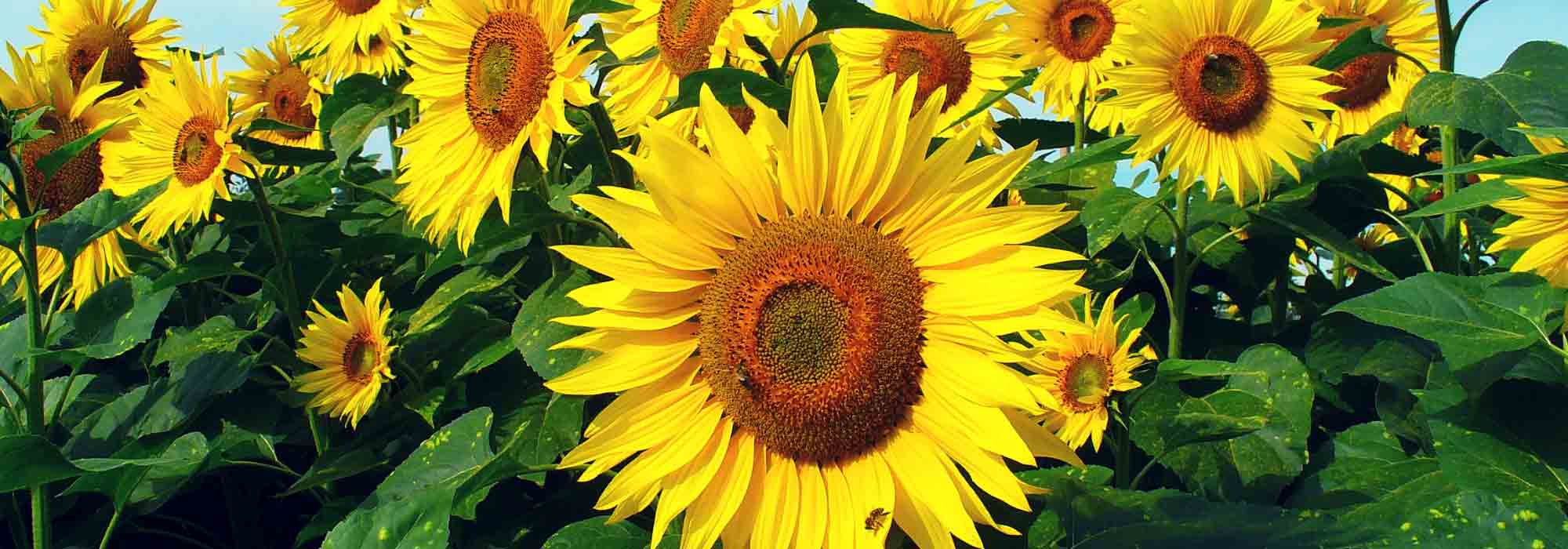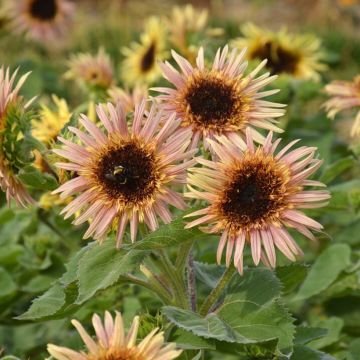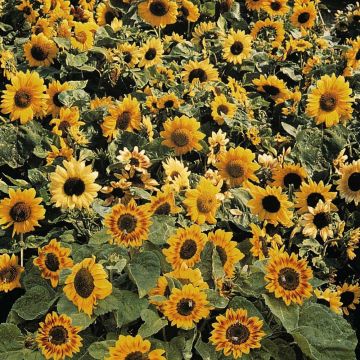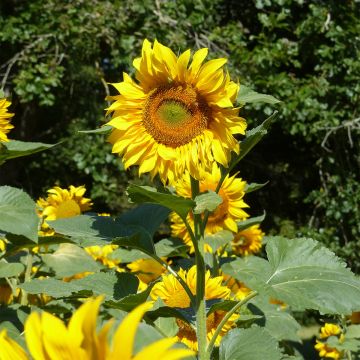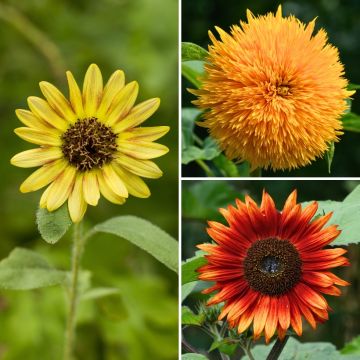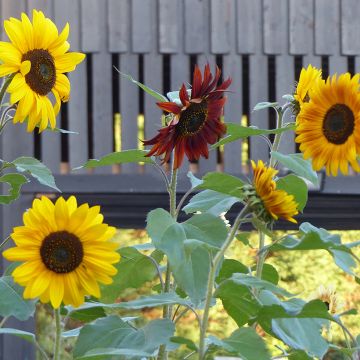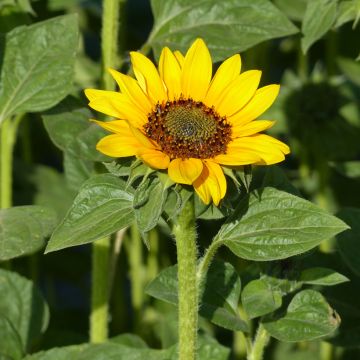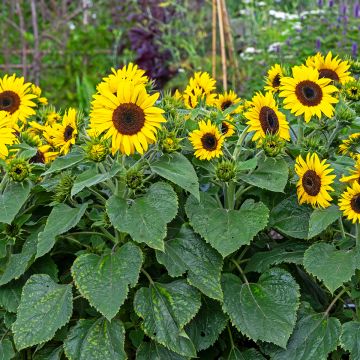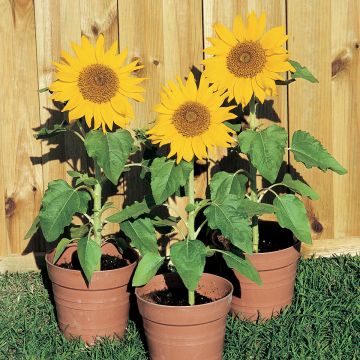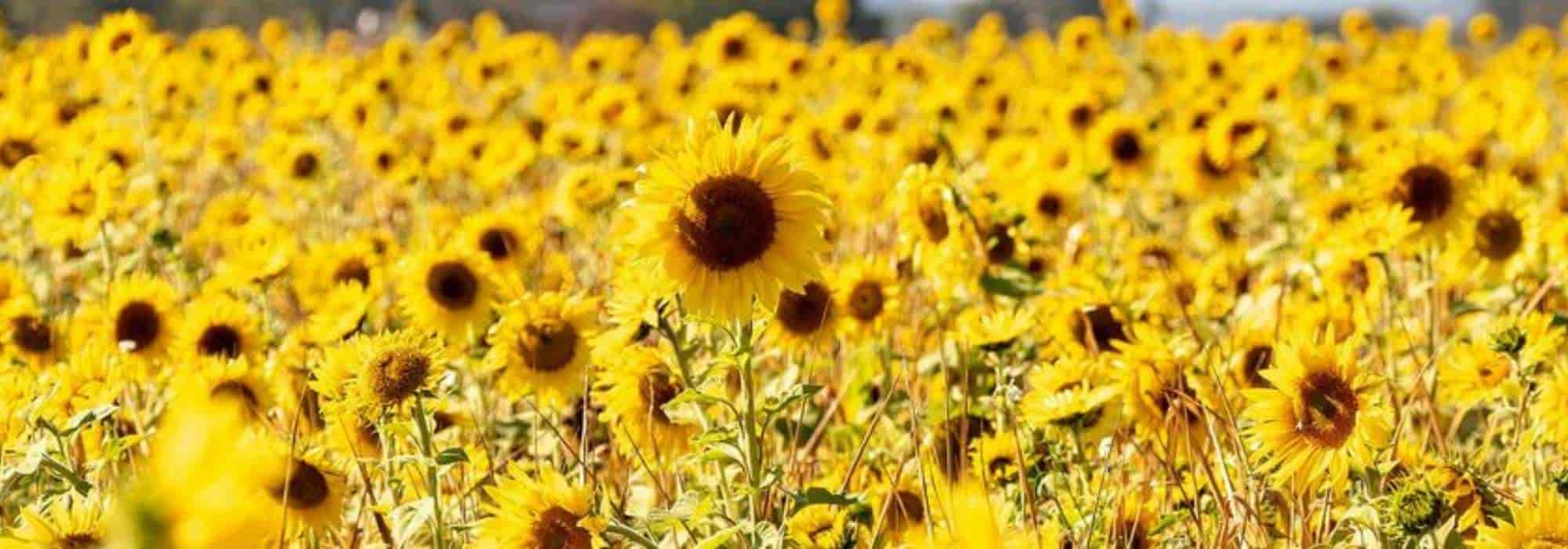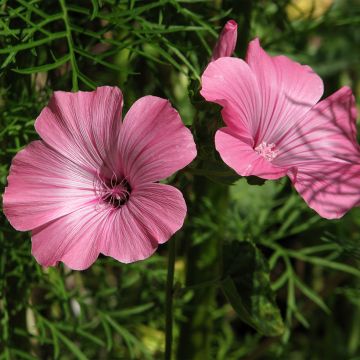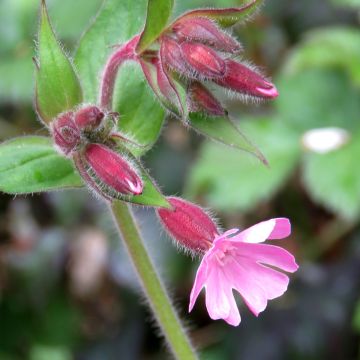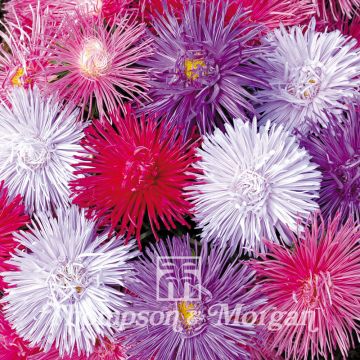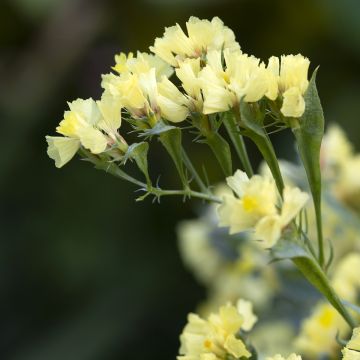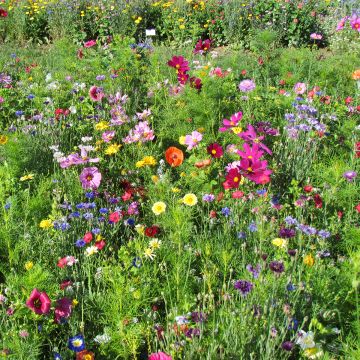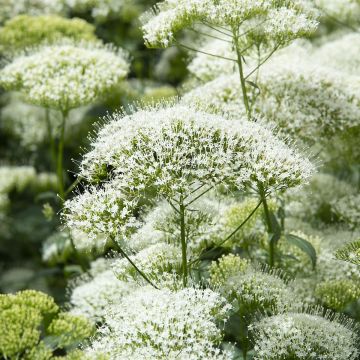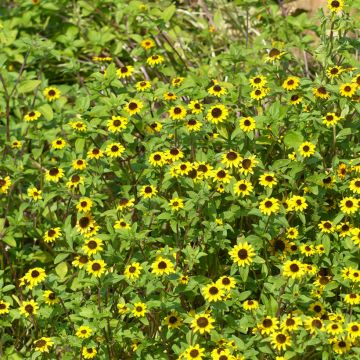

Sunflower Peredovick Seeds - Helianthus annuus
Sunflower Peredovick Seeds - Helianthus annuus
Helianthus annuus Peredovick
Sunflower, Common Sunflower.
Special offer!
Receive a €20 voucher for any order over €90 (excluding delivery costs, credit notes, and plastic-free options)!
1- Add your favorite plants to your cart.
2- Once you have reached €90, confirm your order (you can even choose the delivery date!).
3- As soon as your order is shipped, you will receive an email containing your voucher code, valid for 3 months (90 days).
Your voucher is unique and can only be used once, for any order with a minimum value of €20, excluding delivery costs.
Can be combined with other current offers, non-divisible and non-refundable.
Home or relay delivery (depending on size and destination)
Schedule delivery date,
and select date in basket
This plant carries a 6 months recovery warranty
More information
We guarantee the quality of our plants for a full growing cycle, and will replace at our expense any plant that fails to recover under normal climatic and planting conditions.
Would this plant suit my garden?
Set up your Plantfit profile →
Description
The 'Peredovick' sunflower is a fast-growing annual variety that develops a sturdy and thick stem, reaching up to 2 metres in height before blooming into a massive 30 cm diameter flower. Selected for their vitality and long flowering period, the flowers are very robust and resistant to diseases. They beautify the garden throughout the summer and play a crucial role in attracting pollinating insects, which are essential for the garden. Moreover, 'Peredovick' has the ability to maintain and enrich soil fertility. By acting as a green manure, it stimulates the yield of subsequent crops. Its main characteristic in organic agriculture is to absorb residual nitrogen from the soil after a previous crop. To successfully grow it, it is essential to have a warm, light, and well-aerated soil, exposed to the sun, while ensuring an adequate water supply, as these plants have a strong need for moisture for their development. Consider a quantity of 3 kg of pure seeds for every 1,000 m² of cultivation. This annual plant is sown in spring, directly in place, in any well-drained garden soil.
Helianthus annuus is none other than the famous sunflower cultivated on a large scale for the oil extracted from its seeds. This large annual plant from the Asteraceae family, domesticated for a long time by humans, has a controversial origin, but it is native to the American continent.
The 'Peredovick' variety forms an upright plant, with few branches, reaching between 1.50 and 2 m in height and 0.40 to 0.60 m in width. Flowering usually begins in early July and can continue until late September. It is an inflorescence in a head measuring up to 30 cm in diameter, composed of a corolla of bright yellow petals or ligules, surrounding a lighter central disc. Under the best conditions, it takes 12 to 14 weeks between sowing and the start of flowering. The flower stems are rigid and sturdy, with few branches. The foliage consists of dark green, simple, cordate (heart-shaped), toothed leaves, alternately arranged, sometimes opposite at the base. They are attached to the stem by a more or less long petiole and feel rough to the touch.
The sunflower is an ideal companion for those starting out in gardening or for enjoying pleasant moments with children. Its easy cultivation, large seeds, and suitable size are appreciated by novice gardeners. 'Peredovick' sunflower is particularly suitable for ornamental use in large flower beds and borders. It is also ideal for enhancing the vegetable garden and is very useful for the garden's ecological balance by attracting beneficial wildlife. In the chicken coop, it becomes a valuable ally for chickens by offering an interesting addition to their diet and diversifying their environment. In cultivation, it only requires sun and soil that is not too dry to flourish effortlessly. It is a plant with a rustic appearance and, as such, it integrates well into slightly wild areas of the garden, alongside cosmos, sainfoin, perennial sweet peas, scabiosa, gaillardia, lupins... For the purpose of improving and enriching soils, 'Peredovick' is an excellent green manure, which can be associated with white mustard, phacelia tanacetifolia, or white clover.
Before flowering, the plant optimises its growth by following the sun's path. This phenomenon, called heliotropism, has given rise to some of its common names.
To enjoy your sunflower bouquets for longer, follow these tips:
- Cut the flowers in the morning just after they open. Use a knife that has been thoroughly cleaned beforehand.
- Remove the leaves from the bottom, leaving only 2 or 3 leaves below the flower.
- Change the water in the vase with fresh water every day.
Sunflower in the kitchen: The buds, petals, and seeds are edible. Add a few petals to a green salad for a contrast of colours and their nutty flavour. The green buds can be blanched and then sautéed in garlic butter. Their flavour is similar to that of Jerusalem artichokes. The flesh of the seed can be consumed raw or roasted.
An ecological asset: Throughout the summer, the nectar-rich sunflower flowers attract pollinating insects and butterflies to your garden. A good way to improve the ecosystem and promote the production of fruits and vegetables in your vegetable garden. The oil-rich seeds are particularly appreciated by birds (parrots, tits, doves, goldfinches, siskins, nuthatches, finches...). At the end of flowering, harvest them to make some happy during the winter scarcity.
Organic or 'AB' seeds come from plants grown in organic agriculture (without the use of phytosanitary products). They undergo no treatment after harvest. These seeds are suitable for organic market gardening.
Flowering
Foliage
Plant habit
Botanical data
Helianthus
annuus
Peredovick
Asteraceae
Sunflower, Common Sunflower.
Cultivar or hybrid
Other Sunflower seeds
View all →Planting and care
Sunflowers can be sown:
. Either in March-April, in pots under shelter, to prepare young plants that can be planted in your flower beds after the last frost.
. Or from May to June, after the frost, directly in place. In a sunny location in your garden. To enjoy beautiful fresh flowers throughout the season, we recommend staggering your sowings as much as possible.
Sow Sunflower 'Peredovick' from March to April in pots. Sow your seeds in groups of 2 at a depth of 1 cm. Use good quality potting soil that you will sieve on the surface to bind the seed to its substrate. Before sowing, lightly press the soil with a board. Cover the seeds by sprinkling soil or vermiculite on top, lightly press down and water generously with a fine mist. Place your pots in a well-lit area, without direct sunlight, at a temperature of 20°C to 25°C. Lower the temperature at night to 17°C to create a beneficial alternation for germination. The seeds will take 10 to 15 days to germinate. Keep the soil moist, but not excessively, during growth.
20 days after the appearance of the young plants, remove the weaker shoot to keep only one per pot. To promote branching of the main stem, you can cut off the terminal bud when the plant has developed its fifth leaf.
15 days before their final planting, start gradually acclimatising them to a temperature of 15°C.
At the end of May or beginning of June, the temperature in the garden will be warm enough to plant your young plants. Choose a sunny location. Add a good shovelful of compost to each planting hole. Space your plants 0.40 to 0.60 m apart.
The vigorous growth of the Sunflower will require regular watering. Once the plant has reached about 1m, watering can be stopped, and it can rely on rainfall even if it is scarce.
It takes 84 days from sowing to flowering.
Protect your seedlings from attacks by snails and slugs, which are fond of these young plants. By sowing chives near your sunflowers, you will deter aphids from settling on them.
Sowing period
Intended location
Planting & care advice
This item has not been reviewed yet - be the first to leave a review about it.
Similar products
Haven't found what you were looking for?
Hardiness is the lowest winter temperature a plant can endure without suffering serious damage or even dying. However, hardiness is affected by location (a sheltered area, such as a patio), protection (winter cover) and soil type (hardiness is improved by well-drained soil).

Photo Sharing Terms & Conditions
In order to encourage gardeners to interact and share their experiences, Promesse de fleurs offers various media enabling content to be uploaded onto its Site - in particular via the ‘Photo sharing’ module.
The User agrees to refrain from:
- Posting any content that is illegal, prejudicial, insulting, racist, inciteful to hatred, revisionist, contrary to public decency, that infringes on privacy or on the privacy rights of third parties, in particular the publicity rights of persons and goods, intellectual property rights, or the right to privacy.
- Submitting content on behalf of a third party;
- Impersonate the identity of a third party and/or publish any personal information about a third party;
In general, the User undertakes to refrain from any unethical behaviour.
All Content (in particular text, comments, files, images, photos, videos, creative works, etc.), which may be subject to property or intellectual property rights, image or other private rights, shall remain the property of the User, subject to the limited rights granted by the terms of the licence granted by Promesse de fleurs as stated below. Users are at liberty to publish or not to publish such Content on the Site, notably via the ‘Photo Sharing’ facility, and accept that this Content shall be made public and freely accessible, notably on the Internet.
Users further acknowledge, undertake to have ,and guarantee that they hold all necessary rights and permissions to publish such material on the Site, in particular with regard to the legislation in force pertaining to any privacy, property, intellectual property, image, or contractual rights, or rights of any other nature. By publishing such Content on the Site, Users acknowledge accepting full liability as publishers of the Content within the meaning of the law, and grant Promesse de fleurs, free of charge, an inclusive, worldwide licence for the said Content for the entire duration of its publication, including all reproduction, representation, up/downloading, displaying, performing, transmission, and storage rights.
Users also grant permission for their name to be linked to the Content and accept that this link may not always be made available.
By engaging in posting material, Users consent to their Content becoming automatically accessible on the Internet, in particular on other sites and/or blogs and/or web pages of the Promesse de fleurs site, including in particular social pages and the Promesse de fleurs catalogue.
Users may secure the removal of entrusted content free of charge by issuing a simple request via our contact form.
The flowering period indicated on our website applies to countries and regions located in USDA zone 8 (France, the United Kingdom, Ireland, the Netherlands, etc.)
It will vary according to where you live:
- In zones 9 to 10 (Italy, Spain, Greece, etc.), flowering will occur about 2 to 4 weeks earlier.
- In zones 6 to 7 (Germany, Poland, Slovenia, and lower mountainous regions), flowering will be delayed by 2 to 3 weeks.
- In zone 5 (Central Europe, Scandinavia), blooming will be delayed by 3 to 5 weeks.
In temperate climates, pruning of spring-flowering shrubs (forsythia, spireas, etc.) should be done just after flowering.
Pruning of summer-flowering shrubs (Indian Lilac, Perovskia, etc.) can be done in winter or spring.
In cold regions as well as with frost-sensitive plants, avoid pruning too early when severe frosts may still occur.
The planting period indicated on our website applies to countries and regions located in USDA zone 8 (France, United Kingdom, Ireland, Netherlands).
It will vary according to where you live:
- In Mediterranean zones (Marseille, Madrid, Milan, etc.), autumn and winter are the best planting periods.
- In continental zones (Strasbourg, Munich, Vienna, etc.), delay planting by 2 to 3 weeks in spring and bring it forward by 2 to 4 weeks in autumn.
- In mountainous regions (the Alps, Pyrenees, Carpathians, etc.), it is best to plant in late spring (May-June) or late summer (August-September).
The harvesting period indicated on our website applies to countries and regions in USDA zone 8 (France, England, Ireland, the Netherlands).
In colder areas (Scandinavia, Poland, Austria...) fruit and vegetable harvests are likely to be delayed by 3-4 weeks.
In warmer areas (Italy, Spain, Greece, etc.), harvesting will probably take place earlier, depending on weather conditions.
The sowing periods indicated on our website apply to countries and regions within USDA Zone 8 (France, UK, Ireland, Netherlands).
In colder areas (Scandinavia, Poland, Austria...), delay any outdoor sowing by 3-4 weeks, or sow under glass.
In warmer climes (Italy, Spain, Greece, etc.), bring outdoor sowing forward by a few weeks.






























